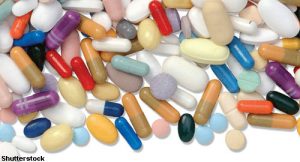 ACR CONVERGENCE 2020—When biologic disease-modifying anti-rheumatic drugs (bDMARDs) are added to methotrexate for induction therapy in early rheumatoid arthritis (RA), patients may achieve low disease activity and remission earlier than with methotrexate monotherapy. This finding is from a five-year study by Sapart et al., which retrospectively analyzed and compared the benefits of methotrexate monotherapy with methotrexate plus a bDMARD as induction therapy in patients with early RA.1
ACR CONVERGENCE 2020—When biologic disease-modifying anti-rheumatic drugs (bDMARDs) are added to methotrexate for induction therapy in early rheumatoid arthritis (RA), patients may achieve low disease activity and remission earlier than with methotrexate monotherapy. This finding is from a five-year study by Sapart et al., which retrospectively analyzed and compared the benefits of methotrexate monotherapy with methotrexate plus a bDMARD as induction therapy in patients with early RA.1
The study’s 470 patients were from the Université Catholique de Louvain (UCL) Brussels cohort and met the ACR/EULAR 2010 classification criteria. All patients were DMARD naive. A senior rheumatologist determined each patient’s induction therapy, which lasted for six to 12 months. Patient characteristics were obtained at baseline, and clinical response was analyzed at month 6 and years 1, 3 and 5.
Baseline: The average patient age was 49 years old, 71% were women, 27% were smokers, and 69% were positive for anti-citrullinated protein antibodies. Of these, 281 patients (60%) were initiated on methotrexate monotherapy, and 189 patients (40%) received combination therapy. At baseline, a high disease activity score was the main factor for initiating bDMARD combination therapy (Disease Activity Score-28 for RA with CRP [DAS28-CRP] 5.2 vs .4.5; P<0.001), followed by Health Assessment Questionnaire Disability Index, anti-citrullinated protein antibody positivity and rheumatoid factor positivity. Other parameters, such as age, gender, smoking habits or baseline erosion, were similar between the two groups.
The Results
At the end of this five-year, retrospective study 391 patients remained in the study group. The researchers then researchers divided the patients into two more subgroups based on the maintenance therapy employed: methotrexate monotherapy followed by methotrexate maintenance therapy (n=134), methotrexate monotherapy followed bDMARD maintenance therapy (n=103); bDMARD combination therapy followed by methotrexate maintenance therapy (n=95), bDMARD combination therapy followed by continued bDMARD (maintenance) therapy (n=59).
At year 1, the DAS28-CRP response rate was statistically and significantly higher in two of the groups: the patients who received methotrexate monotherapy followed by methotrexate maintenance therapy, and the patients who received the bDMARD combination therapy followed by methotrexate maintenance therapy.
The remission rate improved after month 12 in the patients who initially received methotrexate and then switched to a bDMARD for maintenance therapy. Additionally, early RA patients who were initially treated with the bDMARD combination therapy followed by methotrexate maintenance therapy had a stable and continued remission rate.
The authors note that patients with early RA may attain long-term remission with bDMARD added to the induction therapy and followed by methotrexate maintenance therapy.
Michele B. Kaufman, PharmD, BCGP, is a freelance medical writer based in New York City and a pharmacist at New York Presbyterian Lower Manhattan Hospital.
Reference
- Sapart E, Sokolova T, de Montjoye S, et al. Should we use bioDMARDs in first intention in early rheumatoid arthritis? Results at 5 years from the ERA Louvain Brussels Cohort [abstract 0221]. Arthritis Rheumatol. 2020 Oct; 72(suppl 10).